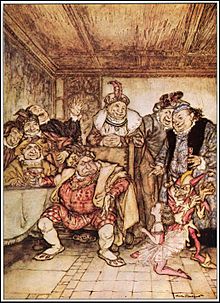
"The Black Cat" is a short story by American writer Edgar Allan Poe. It was first published in the August 19, 1843, edition of The Saturday Evening Post. In the story, an unnamed narrator has a strong affection for pets until he perversely turns to abusing them. His favorite, a pet black cat, bites him one night and the narrator punishes it by cutting its eye out and then hanging it from a tree. The home burns down but one remaining wall shows a burned outline of a cat hanging from a noose. He soon finds another black cat, similar to the first except for a white mark on its chest, but he develops a hatred for it as well. He attempts to kill the cat with an axe but his wife stops him; instead, the narrator murders his wife. He conceals the body behind a brick wall in his basement. The police soon come and, after the narrator's tapping on the wall is met with a shrieking sound, they find not only the wife's corpse but also the black cat that had been accidentally walled in with the body and alerted them with its cry.

A masquerade ball is a special kind of formal ball which many participants attend in costume wearing masks. Less formal "costume parties" may be a descendant of this tradition. A masquerade ball usually encompasses music and dancing. These nighttime events are used for entertainment and celebrations.
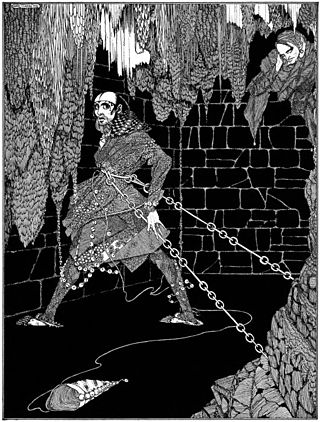
"The Cask of Amontillado" is a short story by the American writer Edgar Allan Poe, first published in the November 1846 issue of Godey's Lady's Book. The story, set in an unnamed Italian city at carnival time, is about a man taking fatal revenge on a friend who, he believes, has insulted him. Like several of Poe's stories, and in keeping with the 19th-century fascination with the subject, the narrative follows a person being buried alive – in this case, by immurement. As in "The Black Cat" and "The Tell-Tale Heart", Poe conveys the story from the murderer's perspective.
"Dolan's Cadillac" is a novella by Stephen King. It was originally published in Castle Rock, King's official newsletter, in monthly installments from February to June 1985. In 1993, "Dolan's Cadillac" was collected in Nightmares & Dreamscapes. The story is narrated by the protagonist, a schoolteacher, and there is only one other main character, Dolan.

The Raven is the nineteenth solo studio album by American rock musician Lou Reed, released on January 28, 2003 by Sire Records. It is a concept album, recounting the short stories and poems of Edgar Allan Poe through word and song, and was based on his 2000 opera co-written with Robert Wilson, POEtry.

Amontillado is a variety of sherry wine characterised by being darker than fino sherry, but lighter than oloroso sherry. Amontillado wine is named after the Montilla municipality, in Andalusia, Spain, where the style of sherry originated in the 18th century; commercially, the name "Amontillado" is used as a measure of colour to label any style of sherry that lay between the categories of fino and oloroso. In American literature, Amontillado sherry features in the title of the short story "The Cask of Amontillado" (1846), by Edgar Allan Poe.

An Evening of Edgar Allan Poe is a 1970 film which features Vincent Price reciting four of Edgar Allan Poe's stories, directed by Kenneth Johnson, with music by Les Baxter.
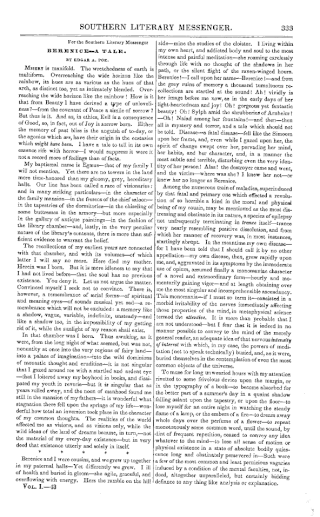
"Berenice" is a short horror story by American writer Edgar Allan Poe, first published in the Southern Literary Messenger in 1835. The story is narrated by Egaeus, who is preparing to marry his cousin Berenice. He tends to fall into periods of intense focus, during which he seems to separate himself from the outside world. Berenice begins to deteriorate from an unnamed disease until only her teeth remain healthy. Egaeus obsesses over them. When Berenice is buried, he continues to contemplate her teeth. One day, he awakens with an uneasy feeling from a trance-like state and hears screams. A servant reports that Berenice's grave has been disturbed, and she is still alive. Beside Egaeus is a shovel, a poem about "visiting the grave of my beloved", and a box containing 32 teeth.
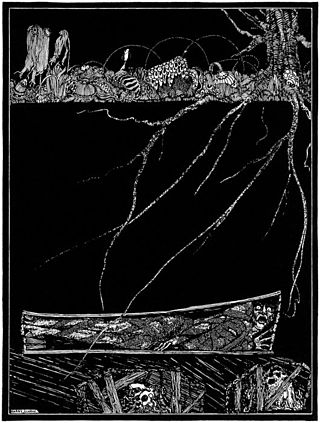
"The Premature Burial" is a horror short story by American writer Edgar Allan Poe, published in 1844 in The Philadelphia Dollar Newspaper. Its main character expresses concern about being buried alive. This fear was common in this period and Poe was taking advantage of the public interest. The story has been adapted to a film.

The influence of Edgar Allan Poe on the art of music has been considerable and long-standing, with the works, life and image of the horror fiction writer and poet inspiring composers and musicians from diverse genres for more than a century.

American poet and short story writer Edgar Allan Poe has had significant influence in television and film. Many are adaptations of Poe's work, others merely reference it.

Elizabeth Fries Ellet was an American writer, historian and poet. She was the first writer to record the lives of women who contributed to the American Revolutionary War.

Thomas Dunn English was an American Democratic Party politician from New Jersey who represented the state's 6th congressional district in the House of Representatives from 1891 to 1895. He was also a published author and songwriter, who had a bitter feud with Edgar Allan Poe. Along with Waitman T. Barbe and Danske Dandridge, English was considered a major West Virginia poet of the mid 19th century.
Dwarfism has been showcased across many types of media. As popular media has become more prevalent, a greater number of works depicting dwarfism have popularized the condition.
Tales of Mystery & Imagination is a popular title for posthumous compilations of writings by American author, essayist and poet Edgar Allan Poe and was the first complete collection of his works specifically restricting itself to his suspenseful and related tales.
The Mind's Eye was a publisher which produced dramatized adaptations of various written works. They were one of America’s biggest audio drama producers during the 1980s. They had mainstream distribution through chains like Waldenbooks and catalogs like Wireless, and they published an expansive catalog of adaptations of classic stories. They are most notable for the 1979 National Public Radio radio drama version of J.R.R. Tolkien's The Lord of the Rings and for the 1980 version of The Hobbit. Prominent contributors included Bernard Mayes, Erik Bauersfeld, John Vickery, Lou Bliss, Gail Chugg, Tom Luce, Ray Reinhardt, James Arrington, Pat Franklyn, Wanda McCaddon, Rick Cimino, Joe Gostanian, John Joss, Karen Hurley, Kevin Gardiner, Darryl Ferreira, and Carl Hague. The company was acquired by Soundelux in 1992.
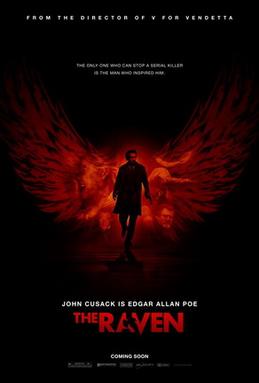
The Raven is a 2012 American crime thriller film directed by James McTeigue, produced by Marc D. Evans, Trevor Macy and Aaron Ryder and written by Ben Livingston and Hannah Shakespeare. Set in 1849, it is a fictionalized account detailing the last days of Edgar Allan Poe's life, in which the poet and author helps the police pursue a serial killer, whose murders mirror those in his stories. While the plot of the film is fictional, the writers based it on some accounts of real situations surrounding Edgar Allan Poe's mysterious death. Poe is said to have repeatedly called out the name "Reynolds" on the night before his death, though it is unclear to whom he was referring. The film stars John Cusack, Alice Eve, Brendan Gleeson and Luke Evans. Its title derives from Poe's 1845 poem "The Raven", in a similar manner to the earlier unrelated 1935 and 1963 films.

Tales of Poe is a 2014 anthology film directed by independent filmmakers Bart Mastronardi and Alan Rowe Kelly. As of February 2019, the film has grossed over $5k from video sales.

Terroir is a 2014 American-British-Italian mystery film written and directed by John Charles Jopson. It is based on Edgar Allan Poe's short story "The Cask of Amontillado". The film stars Keith Carradine, who also served as executive producer. The film premiered at the Wine Country Film Festival in 2014.

A Midnight Visit is an Australian multi-sensory immersive theatre experience based upon the works of Edgar Allan Poe. The audience walks at their own pace through a variety of theatrically designed rooms featuring adult concepts, uneven floors, small and large spaces, and low-level lighting. Finding themselves as co-creators of their own experience, audiences are transported into a macabre dream world, and negotiate encounters with peculiar characters who sing, act, dance and even perform circus aerials.

